Kickboxing for Beginners: All You Need To Know
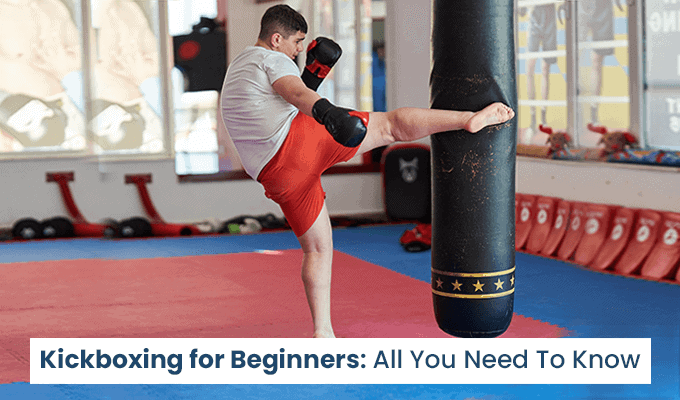
Kickboxing is a stand-up combat sport in which two competitors fight by incorporating hand, foot, knee, and elbow techniques. It is a full-body workout influenced by karate, Muay Thai, and western-style boxing. It is excellent for those who want to try a new exercise. Below we have listed a few things that beginners should consider along with the basic kickboxing techniques. But, before we look at them, let’s check out the benefits that one can obtain through kickboxing training.
Contents
A] Benefits of Kickboxing Training
If you think kickboxing is just punching and kicking, then think again. This is the most common misconception among many. But, in actuality, kickboxing is a fun-filled, high-energy workout program that engages all body muscles. Due to this, it not only provides physical benefits, but also improves mental health. It is also a great exercise for those who want to lose weight, as it helps burn calories faster.
1. Physical Benefits of Kickboxing Training
- Self-defence: Kickboxing is a perfect exercise for self-defence, and most beginners enrol themselves into a kickboxing training program for this very reason. It helps improve the fitness level and increases focus. This, in turn, makes an individual agile, ensuring they respond to dangerous situations quickly.
- Toned body and improved posture: As mentioned above, kickboxing engages the entire body muscles, as it includes jumps, punches and kicks. This high-intensity workout demands a high level of core power and strength. And all these different movements help tone your body and trim your waist. In addition, since it engages your core muscles, it helps enhance your abdominal area and improves posture.
- Burn Calories: Did you know that kickboxing can help you lose around 650 calories in an hour? That’s right! As a fast-paced workout, kickboxing is excellent for decreasing body fat and burning calories. So, if you want to get back into shape, you should opt for kickboxing training.
Further reading: Difference Between Fat Loss and Weight Loss
- Improves Endurance: Kickboxing is all about endurance as it teaches you the correct breathing pattern that’ll ensure you don’t get winded during the workout session. As you move along the next set in your kickboxing training for beginners, you’ll slowly and steadily improve your endurance level. You’ll also learn how to sustain energy, which is crucial for all forms of workouts.
- Builds Coordination: Your coordination, flexibility, and balance will improve with the rapid movements in kickboxing. With time, you’ll learn new and faster movement sequences, which will further enhance eye-and-hand coordination and improve your reflex timing.
2. Mental Benefits of Kickboxing Training
- De-stress and Regulates Mood: The best method to release stress is through physical activity, so what better way to de-stress than kickboxing which includes kicks and punches. Even the basic kickboxing techniques can help you channel your frustration and anger constructively. It also helps boost the production of endorphins (the feel-good hormones) which helps regulate your mood.
- Increases Confidence: Practising kickboxing every day can help you get in shape, increase your energy levels and make you feel upbeat. And all of these things together can help you increase your confidence level.
- Improves Concentration and Focus: Kickboxing requires patience, dedication and persistence. The training requires your complete attention if you want to master the kicks, punches and moves. Thus, by not letting your mind wander, you are fully immersing yourself in the training. This will eventually increase your concentration and focus levels.
B] Kickboxing Training For Beginners: Things to Consider
1. Choose an Experienced Instructor
To begin kickboxing training, you need to connect with an experienced kickboxing instructor who will guide and create a workout plan tailored to meet your specific requirements.
2. Get The Right Gear
The kickboxing gear list includes hand wraps, thigh pads, foot guards, head protection, mouth guard, shin guards, gloves and ankle support wraps. These are some of the essentials. Apart from these, if you are practising kickboxing at home, you would require punching bags, mitts, a jump rope and a kettlebell.
3. Set Realistic Goals
Unlike other exercises, kickboxing is intense. The kickboxing training program may challenge your body in ways it’s not used to yet. So talk to your kickboxing instructor, who will help you set realistic goals.
4. Fuel up
Exercise and eating right go hand-in-hand. Since kickboxing is an intense workout, you need to maintain a healthy diet to build stamina. Here, a kickboxing instructor that also offers diet and nutrition advice can help you chart a wholesome diet. This will help you to maintain your energy levels throughout the workout session.
To know what to eat before and after a workout, read this guide on pre and post-workout nutrition.
C] Basic Kickboxing Tips For Beginners
1. The Jab
A beginner kickboxing move, jab is a type of punch used in martial arts. Although there are numerous jab variations, they share the same characteristics. In a fighting stance, the lead-fist is thrown straight ahead while the other arm extends from the side of the torso.
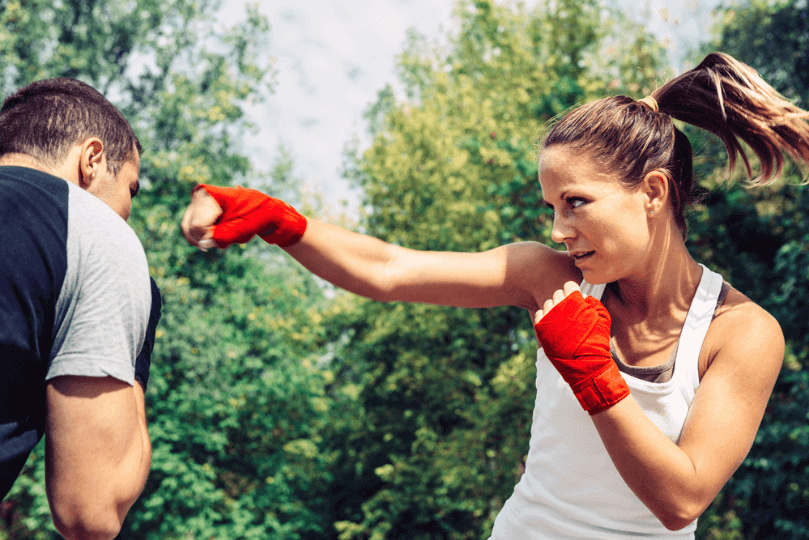
2. The Cross
In this kickboxing technique, an individual throws a punch with his dominant hand the minute his competitor leads with the opposite hand. Since the blow crosses over the leading arm, it is called across.
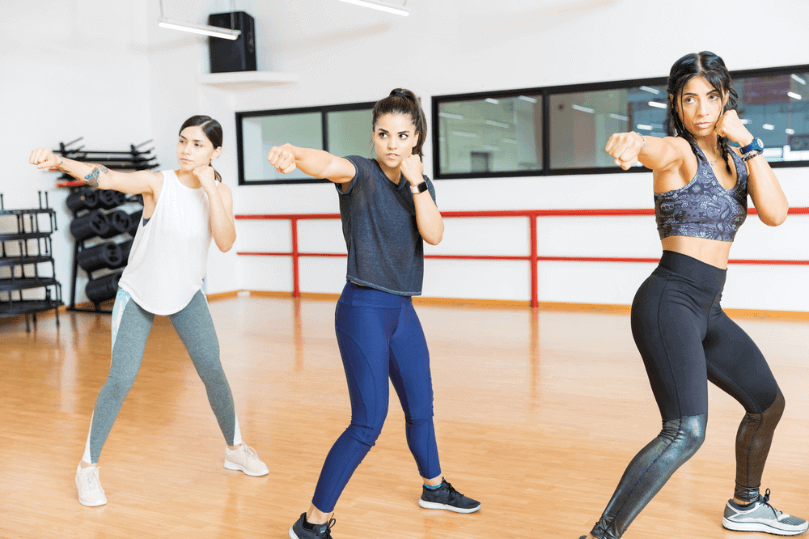
3. Lead Hook
The puncher shifts his body weight to the lead foot when throwing a hook. This allows him to swing his lead foot and generate kinetic energy through the shoulder/torso/hip, thereby swinging his lead fist horizontally toward the competitor.
4. Rear Hook
It is performed by turning the core muscles & back while swinging the arm at a 90-degree horizontal arc.
5. Lead Uppercut
The uppercut punch is an upward motion punch used for short-range fighting. The uppercut punch targets the chin. The uppercut is the leading punch thrown in a combo or a punch thrown with your leading/front hand.

6. Rear Uppercut
The rear uppercut is an uppercut punch delivered with the backhand.
7. Lead Kick
For a lead kick, bend your left leg at the knee. Now kick straight at a 90-degree angle from the floor and body. Shift the centre of gravity over the rear leg. Practice this moment regularly by slowly bending your leg and striking out. You can generate power from this and balance yourself on your rear leg and core.

8. Rear Kick
Perform a rear kick by bending your rear leg at the knee and shifting the centre of gravity over the lead leg. Use your core to redirect your entire body on your lead leg. Now swing your rear leg swiftly to hit the bag at a 90-degree angle.
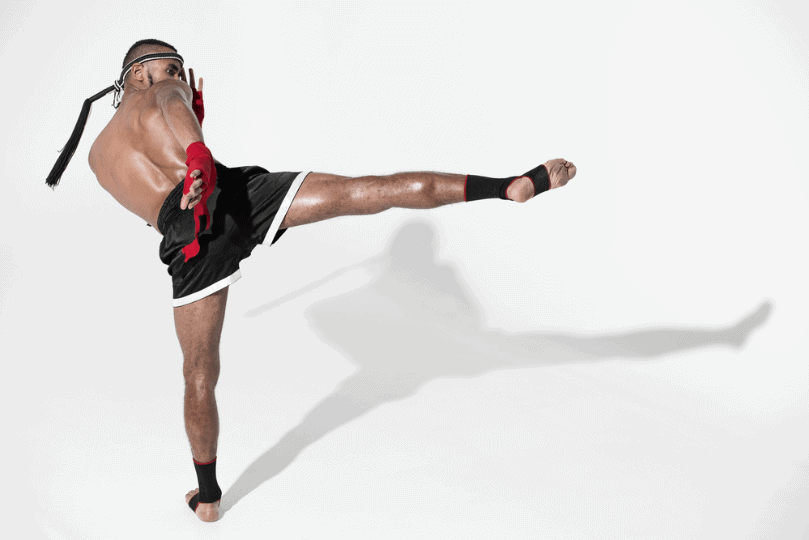
Conclusion
No matter if you are practising a cardio-focused workout or basic kickboxing techniques – it’s just practised. You are here to learn a new skill, have fun and get in shape. While it can be daunting, remember you do not have to do anything you are not comfortable doing. You will have a ton of time to improve. So, take it slow and always follow the instructions of the trainer to avoid muscle cramps and injury.

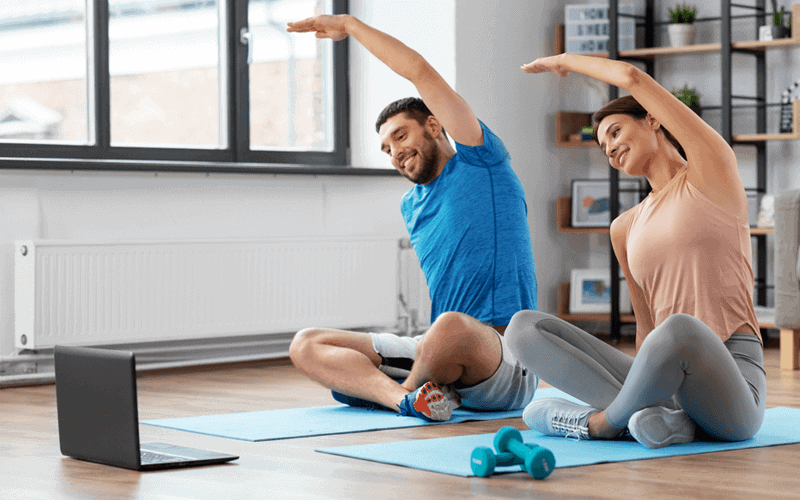
Leave a Reply